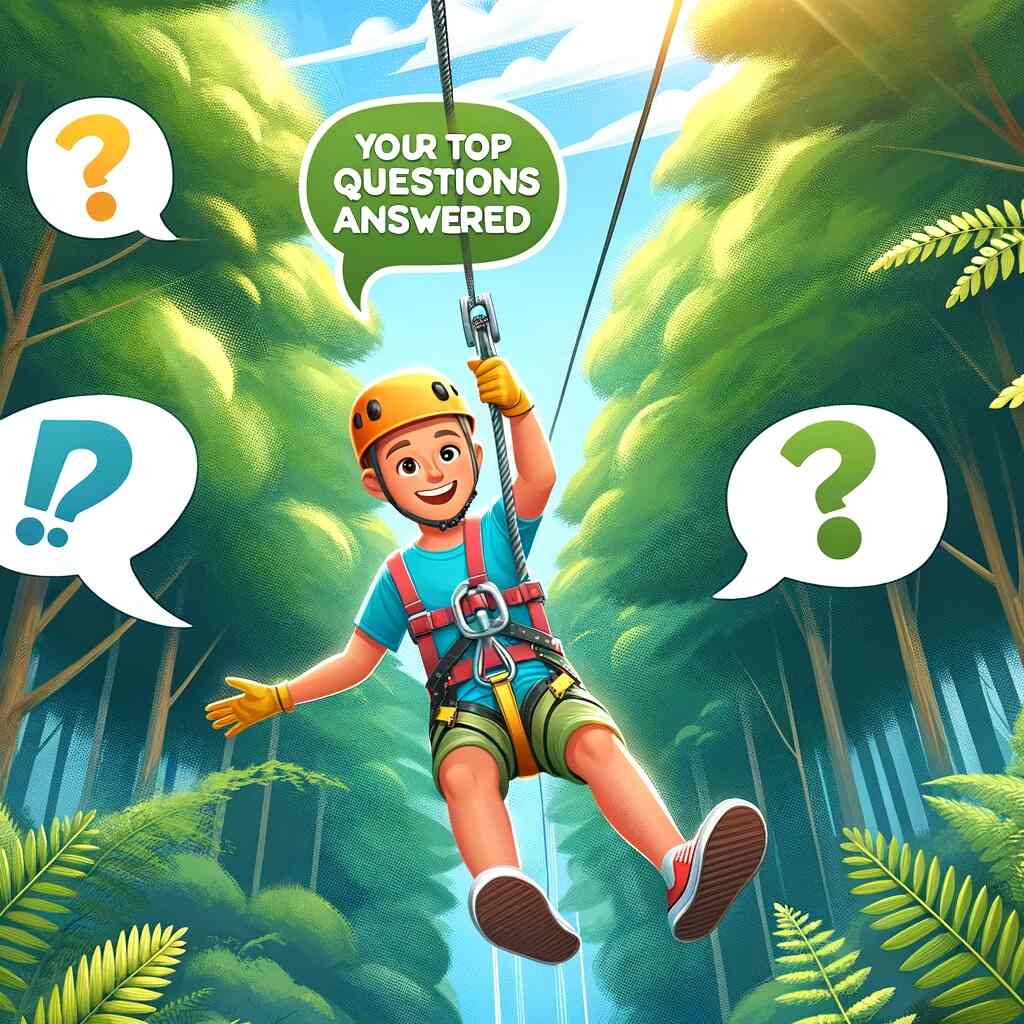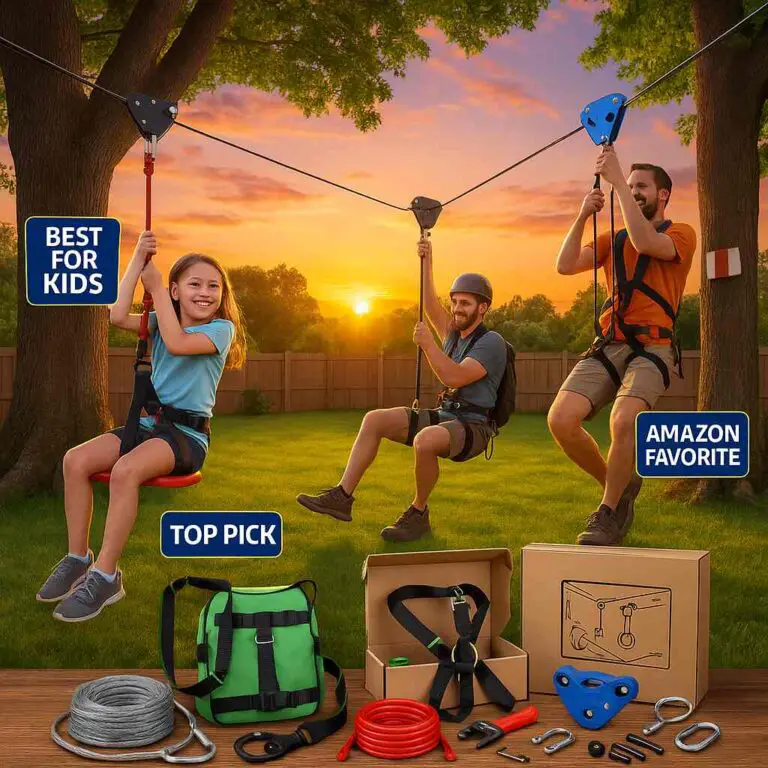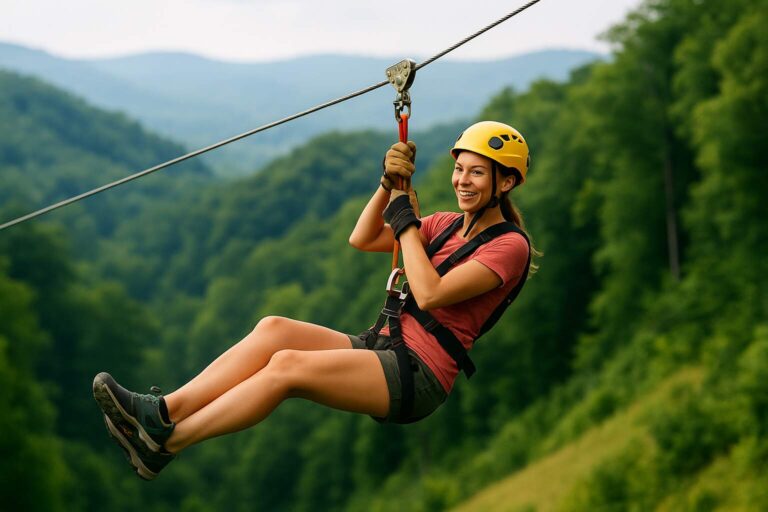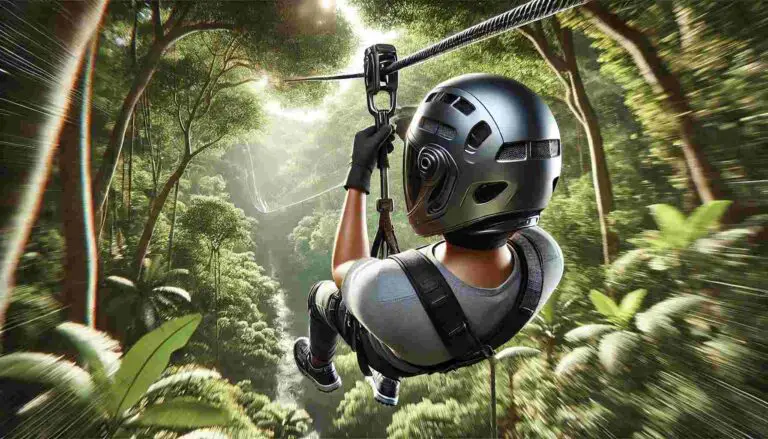Ziplining has become an increasingly popular adventure activity, offering thrill-seekers an exciting way to experience the great outdoors while soaring through the treetops. However, with its growing popularity, comes a host of questions from curious adventurers.
In this comprehensive guide, we aim to address the most common zipline frequently asked questions, helping you prepare for your next thrilling adventure. From safety concerns to what to wear and expect, we’ve got you covered.
Table of Contents
- What is Ziplining?
- Where Can You Go Ziplining?
- How Safe is Ziplining?
- What Should You Wear for Ziplining?
- What Can You Expect During a Ziplining Adventure?
- How Much Does Ziplining Cost?
- Are There Age or Weight Restrictions for Ziplining?
- Do I Need Any Special Skills or Training to Go Ziplining?
- Can You Go Ziplining If You’re Afraid of Heights?
- Is Ziplining Environmentally Friendly?
- How Do Ziplines Work?
- Can You Take Photos or Videos While Ziplining?
- What Are Some Tips for a Great Ziplining Experience?
- Conclusion
1. What is Ziplining?
Ziplining, also known as a canopy tour or zip line adventure, is an exhilarating outdoor activity that involves riding along a suspended cable from one platform to another, typically through a forested area or across scenic landscapes. Participants are harnessed securely, allowing them to glide through the air, experiencing the thrill of flight while taking in breathtaking views.
2. Where Can You Go Ziplining?
Ziplining is a versatile activity that can be found in various locations around the world. Popular destinations include:
- Tropical rainforests: Explore the lush canopy of the Amazon or Costa Rican rainforests.
- Mountainous regions: Experience the adrenaline rush of ziplining in the Rocky Mountains or the Swiss Alps.
- Tourist resorts: Many vacation destinations offer ziplining as part of their adventure packages.
- Urban settings: Some cities have urban ziplines that provide a unique perspective on their skyline.
The availability of ziplining depends on the region, so check with local tour operators or do some research to find the perfect location for your adventure.
3. How Safe is Ziplining?
Ziplining can be a safe and enjoyable activity when conducted by experienced and certified operators who prioritize safety measures. To ensure a safe ziplining experience, consider the following:
- Choose a reputable zipline operator with a track record of safety.
- Verify that the operator adheres to industry safety standards and regulations.
- Wear appropriate safety gear, including a harness, helmet, and gloves.
- Follow the instructions provided by your zipline guides.
- Check the equipment for any visible signs of wear or damage before your ride.
By taking these precautions and trusting in the expertise of professionals, you can significantly reduce the risks associated with ziplining.
4. What Should You Wear for Ziplining?
Wearing the right attire is essential for comfort and safety during your ziplining adventure. Here’s what you should consider:
- Comfortable clothing: Choose lightweight and breathable clothing, such as activewear or outdoor gear. Avoid loose clothing that can get caught in the zipline equipment.
- Closed-toe shoes: Wear sturdy, closed-toe shoes with a good grip. Sneakers or hiking boots are excellent choices.
- Secure accessories: Remove any jewelry, scarves, or loose accessories that could pose a safety hazard or get entangled in the zipline.
- Weather-appropriate gear: Dress according to the weather. In cooler climates, layering is advisable, and in rainy conditions, bring a waterproof jacket.
- Safety gear: Your zipline operator will provide essential safety gear, including a harness and helmet. Make sure to wear these items as instructed.
5. What Can You Expect During a Ziplining Adventure?
A typical ziplining adventure includes the following components:
- Safety briefing: Before you start, you’ll receive a safety briefing from experienced guides. They will explain the equipment, demonstrate proper techniques, and address any concerns.
- Harnessing up: You’ll be fitted with a harness and helmet, ensuring a secure connection to the zipline.
- Scenic rides: Enjoy the thrill of gliding through the air as you zip from platform to platform. Some ziplines even offer night rides or themed experiences.
- Educational insights: Many zipline tours provide educational information about the local flora and fauna, making it a great way to learn about the environment.
- Stunning views: Ziplining offers a unique perspective of the landscape, allowing you to take in breathtaking views that you wouldn’t see from the ground.
- Adventure camaraderie: Ziplining is often done in groups, making it a social and shared adventure.
6. How Much Does Ziplining Cost?
The cost of a ziplining adventure varies widely based on several factors:
- Location: Ziplining in popular tourist destinations may be more expensive than in less frequented areas.
- Duration: Longer zipline tours with more platforms and longer rides typically cost more.
- Inclusions: Some zipline packages may include additional activities or meals, affecting the overall price.
- Time of day: Nighttime ziplining experiences may be priced differently from daytime tours.
On average, you can expect to pay between $50 and $150 per person for a ziplining adventure. Be sure to check with specific operators for accurate pricing and any available discounts.
7. Are There Age or Weight Restrictions for Ziplining?
Ziplining operators often have age and weight restrictions to ensure the safety of participants. While these restrictions can vary, here are some general guidelines:
- Age: Most ziplines have a minimum age requirement of 7 to 10 years old, depending on the operator and the specific tour. Some operators also have upper age limits.
- Weight: There is usually a weight limit for ziplining, typically ranging from 250 to 275 pounds (113 to 125 kilograms). This restriction is in place to ensure the integrity of the zipline equipment.
Always check with the zipline operator for their specific age and weight requirements before booking your adventure.
8. Do I Need Any Special Skills or Training to Go Ziplining?
No special skills or prior training are required to go ziplining. Ziplining is designed to be accessible to people of various fitness levels and abilities. Your guides will provide you with all the necessary instructions and ensure that you are properly harnessed and secured before each ride.
However, it’s essential to listen attentively to the safety briefing and follow the guidance of the zipline guides. They will teach you how to brake, steer, and enjoy a safe and exciting ziplining experience.
9. Can You Go Ziplining If You’re Afraid of Heights?
Ziplining can be an intimidating prospect for those with a fear of heights, but it’s not impossible. Many people with a fear of heights have successfully conquered their fears by taking part in ziplining adventures. Here are some tips if you’re considering ziplining but are afraid of heights:
- Start small: Choose a zipline tour with shorter and lower rides for your first experience. As you gain confidence, you can progress to more challenging courses.
- Focus on the experience: Try to shift your focus from the height to the unique sensations of gliding through the air and the stunning scenery around you.
- Take deep breaths: Practice deep breathing techniques to calm your nerves and reduce anxiety.
- Go with a supportive group: Ziplining with friends or family can provide emotional support and make the experience more enjoyable.
- Speak to your guides: Let your zipline guides know about your fear of heights. They are experienced in helping participants overcome their fears and can provide reassurance and guidance.
Remember that overcoming a fear of heights is a personal journey, and ziplining can be a thrilling way to confront and conquer that fear.
10. Is Ziplining Environmentally Friendly?
Ziplining is generally considered an environmentally friendly activity when operated responsibly. Here’s why:
- Low impact: Ziplines are typically constructed to minimize impact on the natural environment. Platforms are often built without the need for tree cutting, and the cables are designed to be non-invasive.
- Education and conservation: Many zipline operators use the experience to educate participants about the importance of preserving the natural habitat and wildlife conservation efforts.
- Economic support: Ziplining can provide a source of income for local communities, encouraging them to protect their natural surroundings.
However, it’s crucial to choose zipline operators who prioritize eco-friendly practices and conservation efforts. Research and select operators who have received certifications or awards for their commitment to environmental sustainability.
11. How Do Ziplines Work?
Understanding the basic mechanics of ziplines can enhance your appreciation of this thrilling activity. Here’s how ziplines work:
- Cable and pulley system: A zipline consists of a cable stretched between two or more platforms. Participants ride along the cable using a pulley system.
- Gravity and friction: The force of gravity propels you down the cable. The pulley system reduces friction, allowing you to glide smoothly.
- Braking system: Most ziplines are equipped with a braking system that you control. Your guides will teach you how to brake and slow down as you approach the landing platform.
- Safety measures: Harnesses and helmets ensure your safety, and guides supervise the entire experience to address any issues and ensure a smooth ride.
12. Can You Take Photos or Videos While Ziplining?
Capturing the excitement of your ziplining adventure is a common desire. Many zipline operators allow participants to take photos and videos during the experience, but there are important considerations:
- Hands-free operation: Ensure that you can operate your camera or smartphone without compromising your safety or the safety of others. Using a hands-free mount or harness can be helpful.
- Secure equipment: Make sure your camera or phone is securely attached to your person or clothing to prevent dropping it during the ride.
- Check with the operator: Always ask the zipline operator about their policy regarding cameras and recording devices. Some operators may have restrictions or guidelines in place.
- Enjoy the moment: While capturing memories is important, remember to also savor the experience without being too preoccupied with taking photos or videos.
13. What Are Some Tips for a Great Ziplining Experience?
To ensure you have a fantastic ziplining adventure, consider these tips:
- Book in advance: Ziplining can be a popular activity, so it’s a good idea to book your tour in advance, especially during peak tourist seasons.
- Arrive early: Arriving at the zipline location ahead of your scheduled time allows for a more relaxed and enjoyable experience.
- Stay hydrated: Depending on the location and climate, ziplining can be physically demanding. Drink plenty of water before and after your adventure.
- Follow instructions: Listen carefully to the safety briefing and follow all instructions provided by your guides. Your safety is their top priority.
- Embrace the thrill: Ziplining is an exciting adventure. Embrace the rush, and don’t be afraid to scream or shout if it adds to your enjoyment.
- Respect the environment: Be mindful of the natural surroundings, and follow any guidelines provided by your zipline operator to minimize your impact on the ecosystem.
Conclusion
Ziplining is an exhilarating adventure that allows you to experience the thrill of flight while taking in stunning vistas. Whether you’re a first-time zipliner or a seasoned adventurer, understanding the basics of ziplining, from safety precautions to what to wear, can enhance your overall experience.
By choosing a reputable operator, adhering to safety guidelines, and following these tips, you can embark on a ziplining adventure that will create lasting memories and a sense of awe for the beauty of our natural world.
I hope that this zipline FAQ has provided you with some insight. So, don your harness, step onto that platform, and get ready to soar through the treetops on your next ziplining adventure!








